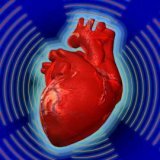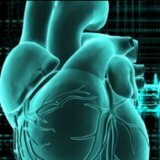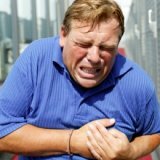Algorithm of cardiopulmonary resuscitation in children and adults: rules for emergency care
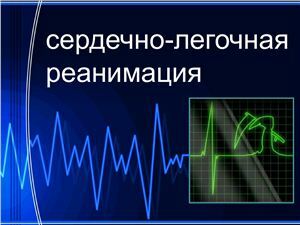 Not often, but there are such cases: a man walked down the street, exactly, confidently and suddenly fell, stopped breathing, turned blue.In such cases, the people around usually call the ambulance and wait for a long time.In five minutes, the arrival of specialists is no longer necessary - the person has died.And extremely rarely there is a person who knows the algorithm of cardiopulmonary resuscitation and is able to apply his actions in practice.
Not often, but there are such cases: a man walked down the street, exactly, confidently and suddenly fell, stopped breathing, turned blue.In such cases, the people around usually call the ambulance and wait for a long time.In five minutes, the arrival of specialists is no longer necessary - the person has died.And extremely rarely there is a person who knows the algorithm of cardiopulmonary resuscitation and is able to apply his actions in practice.
Reasons for Heart Failure
In principle, any disease can cause cardiac arrest.Therefore, to list all those hundreds of diseases that are known to specialists, it is pointless and there is no need. However, most often to cardiac arrest are:
- heart disease;
- injury;
- drowning;
- electric shock;
- intoxication;
- infection;
- respiratory arrest in case of aspiration( inhalation) of a foreign body - this is the cause most often occurs in children.
However, regardless of the reason, the algorithm of actions for cardiopulmonary resuscitation is always the same.
Stages of cardiopulmonary resuscitation
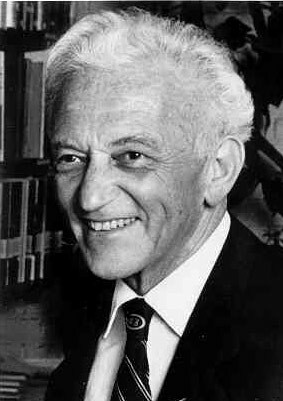 In films, the attempts of heroes to reanimate a dying person are often shown.Usually it looks like this - to the motionless lying victim runs up a positive character, falls next to him on his knees and begins to press hard on his chest.With all his artistry, he shows the dramatic nature of the moment: he jumps over a person, trembles, cries or screams.If the case occurs in the hospital, doctors must report that "he leaves, we lose him."If, according to the scenario of the writer, the victim should live, he will survive.However, there is no chance for salvation in real life, because the "reanimator" did everything wrong.
In films, the attempts of heroes to reanimate a dying person are often shown.Usually it looks like this - to the motionless lying victim runs up a positive character, falls next to him on his knees and begins to press hard on his chest.With all his artistry, he shows the dramatic nature of the moment: he jumps over a person, trembles, cries or screams.If the case occurs in the hospital, doctors must report that "he leaves, we lose him."If, according to the scenario of the writer, the victim should live, he will survive.However, there is no chance for salvation in real life, because the "reanimator" did everything wrong.
In 1984, Austrian anesthetist Peter Safar proposed the ABC system.This complex formed the basis of modern recommendations for cardiopulmonary resuscitation and for more than 30 years this rule is used by all doctors without exception.In 2015, the American Association of Cardiology issued an updated guide for practitioners, which details all the nuances of the algorithm in detail.

The ABD algorithm is a sequence of actions that give the victim a maximum chance of survival. The essence of it lies in its very name:
- Airway - respiratory tract: identifying their blockage and its removal to ensure the patency of the larynx, trachea, bronchi;
- Breathing - breathing: performing artificial respiration using a special technique with a certain frequency;
- Circulation - maintenance of blood circulation at cardiac arrest by its external( indirect massage).
Cardiopulmonary resuscitation according to the ABC algorithm can be performed by anyone who does not even have a medical background.This is the basic knowledge that everyone must possess.
How is cardiopulmonary resuscitation carried out in adults and adolescents
First of all, you should ensure the safety of the victim, not forgetting about yourself.If you removed a person from an accident in the car, immediately move it away from it.If a fire rages nearby, do the same.Move the victim to any nearby safe place and proceed to the next step.
Now you need to make sure that a person really needs CPR.To do this, ask him "What is your name?" It is this question that will best attract the attention of the victim if he is conscious, even if cloudy.
If he does not respond, slow him down: lightly pinch his cheek, pat his shoulder.Do not move the injured person unnecessarily, since you can not be sure that there are no injuries if you have unconsciously uncovered it.
In the absence of consciousness, check whether there is or not breath.To do this, attach the ear to the victim's mouth. Here the rule "To see.Hear.Touch:
- you see the movements of the chest;
- you hear the sound of exhaled air;
- you feel the cheek of the air movement.
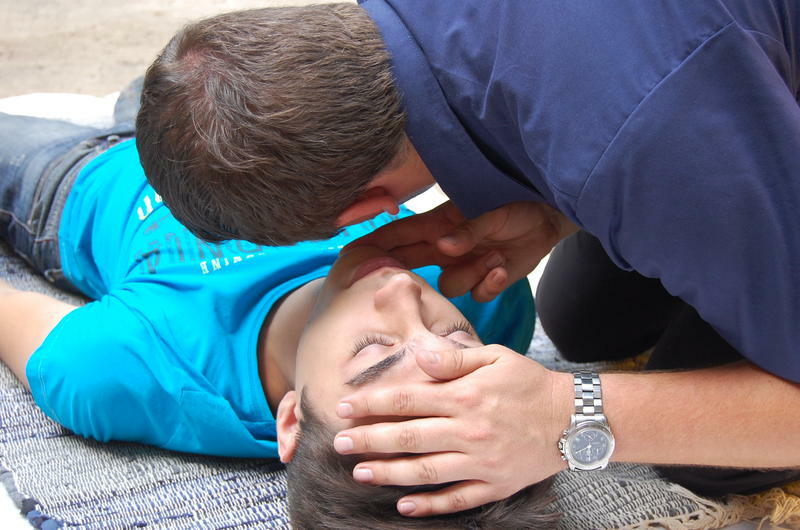
In the movies, often apply the ear to the chest.This method is relatively effective only if the patient's chest is completely exposed.Even one layer of clothing will distort the sound and you will not understand anything.
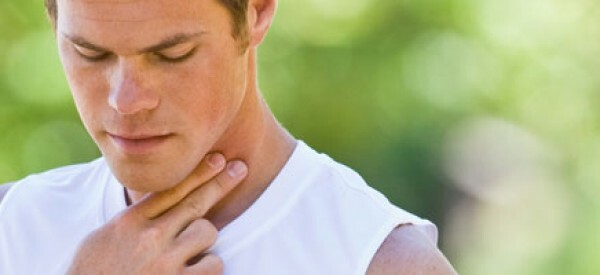 Simultaneously with the breath test, you can find out the presence of a pulse.Do not look for it on the wrist: the best way to identify the pulse is palpation of the carotid artery.To do this, place the index and ring finger on the tip of the "Adam's apple" and slide them toward the back of the neck until the fingers flex into the muscle that passes from top to bottom.If there is no ripple, then cardiac activity has stopped and it is necessary to start saving lives.
Simultaneously with the breath test, you can find out the presence of a pulse.Do not look for it on the wrist: the best way to identify the pulse is palpation of the carotid artery.To do this, place the index and ring finger on the tip of the "Adam's apple" and slide them toward the back of the neck until the fingers flex into the muscle that passes from top to bottom.If there is no ripple, then cardiac activity has stopped and it is necessary to start saving lives.
Attention! You have 10 seconds to check for a pulse and breathing!
The next step is to make sure that the victim has no foreign bodies in his mouth.In no case, seek their touch: a person may start cramping and your fingers will simply bite off or you can accidentally tear off an artificial tooth crown or bridge that will get into the airways and cause asphyxia.You can remove only those foreign bodies that are visible from the outside and are close to the lips.
Now attract the attention of others, ask them to call an ambulance, and if you are alone, do it yourself( call the alarm services for free), then start cardiopulmonary resuscitation.
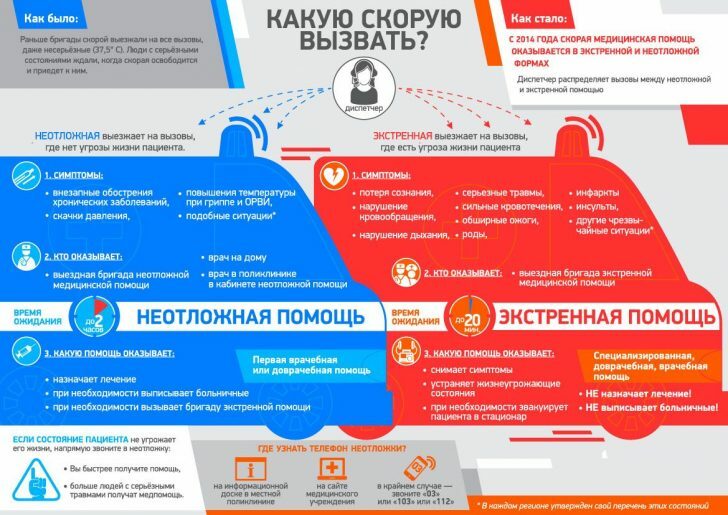
Place the person on the back on a solid surface - ground, asphalt, table, floor.Tilt his head, push the lower jaw forward and open the mouth of the victim - this will prevent the tongue from leaning and allow for efficient artificial respiration( triple maneuver Safar ).
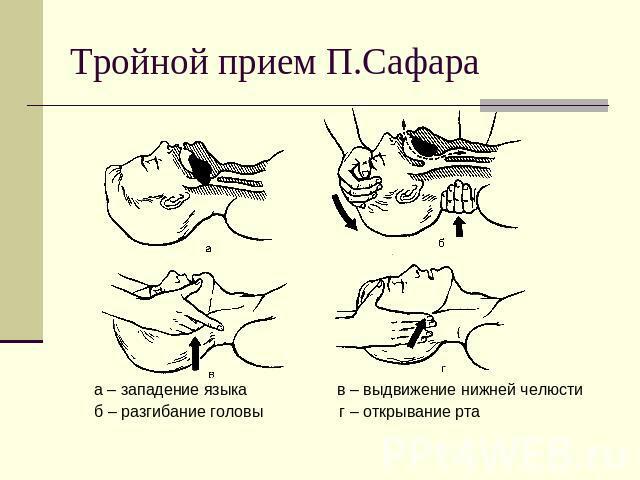
If you suspect a neck injury or if the person was already unconscious, limit yourself only to the extension of the lower jaw and slightly opening the mouth( double Safari maneuver).Sometimes this is enough to make a person start to breathe.
Attention! The presence of breathing almost one hundred percent indicates that the human heart is working.If the victim breathes, it should be turned sideways and left in this position until the doctors arrive.Observe the victim, checking for pulses and breathing every minute.
If there is no pulse, start an external massage of the heart.To do this, if you are right-handed, then place the base of the right hand on the bottom third of the sternum( 2-3 cm below the conditional line passing through the nipples).Place the base of the left palm on it and twist the fingers as shown.
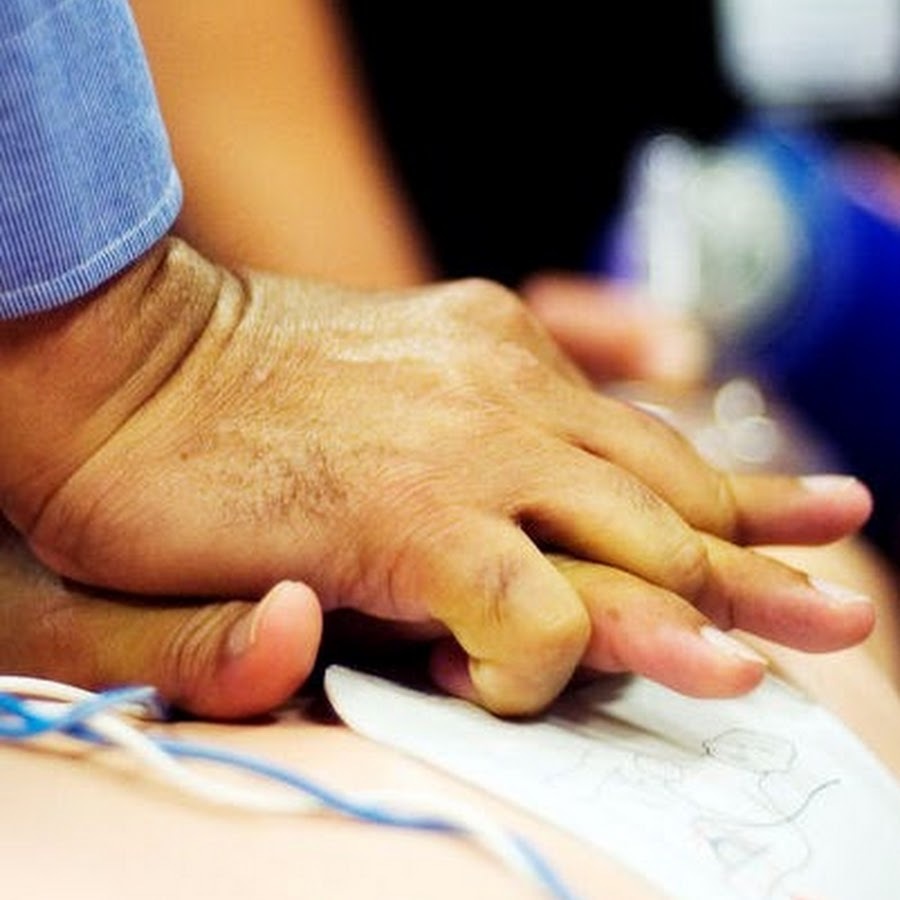
Hands must be straight!Press the entire body on the chest of the victim with a frequency of 100-120 taps per minute.The depth of depression is 5-6 cm. Do not take long breaks - you can relax for no more than 10 seconds.Let the thorax completely decompress after pressing, but do not lift your hands from it.
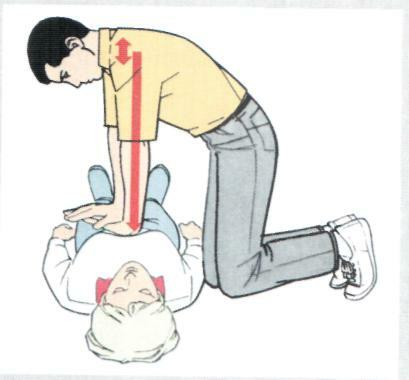
The most effective method of artificial respiration is "from mouth to mouth".To conduct it after triple or double maneuver Safar cover the mouth of the victim with his mouth, clamp his nose with the fingers of one hand and make a vigorous exhalation lasting 1 second.Let the patient exhale.
The effectiveness of artificial respiration is determined by the movements of the chest, which should rise and fall when inhaled-exhaled.If this is not the case, then the person is obstructed by the airways.Check again the oral cavity - you may see a foreign body that can be removed.In any case, do not interrupt the cardiopulmonary resuscitation.
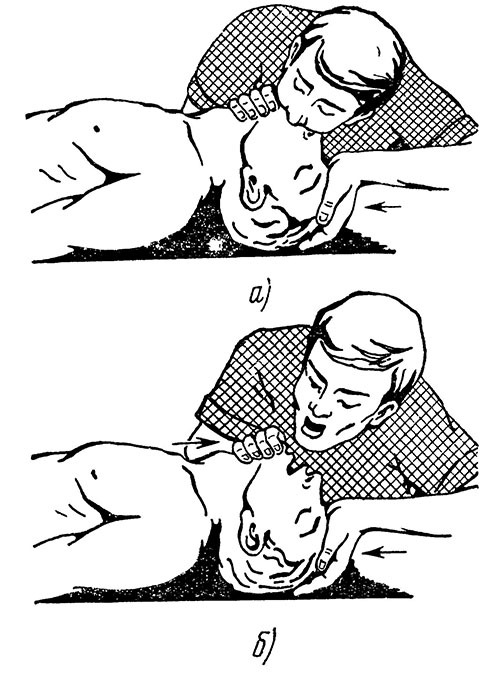
WARNING! According to the recommendations of the American Association of Cardiologists, you can refuse to carry out artificial respiration, as chest compressions provide the body with the necessary minimum air.However, artificial respiration increases by several percent the probability of a positive effect from CPR.Therefore, if possible, it should still be carried out, remembering that a person may be sick with an infectious disease such as hepatitis or HIV infection.
One man can not at the same time pushing on the chest and carry out artificial respiration, so action should be alternated: after every 30 strokes should be performed 2 breaths.
Every two minutes, you should stop and check for a pulse.If it appears - pressing on the chest should be stopped.
detailed algorithm of cardiopulmonary resuscitation in adults and adolescents is presented in the video review:
When to stop CPR
Termination of CPR performed :
- the appearance of spontaneous breathing andPulse;
- when signs of biological death appear;
- 30 minutes after the start of resuscitation;
- if the reanimator is completely depleted physically and is not able to continue to produce CPR.
Numerous studies indicate that cardiopulmonary resuscitation for more than 30 minutes can cause heart rhythm.However, during this time the cortex of the brain is dying and the person is not able to recover.This is why a half-hour interval is established during which the victim has a chance of recovery.
Features cardiopulmonary resuscitation in children
In children, more common cause of clinical death is asphyxia.Therefore, this category of patients is particularly important to carry out the whole complex of resuscitative measures - both external cardiac massage, and artificial respiration.
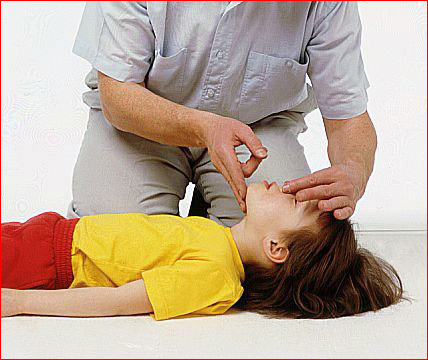
Note: if an adult is allowed to leave for a very short time in order to call for help, then the child first needs to spend two minutes CPR, and only after that you can leave for a few seconds.
conduct pressing the chest of the child should be at the same frequency and amplitude, as in adults.Depending on his age, you can press with two or one hand.In infants, the method is effective in which the baby's chest is wrapped in both hands, placing the thumbs on the middle of the sternum, while the rest are pressed tightly against the sides and back.Pressing with thumbs.
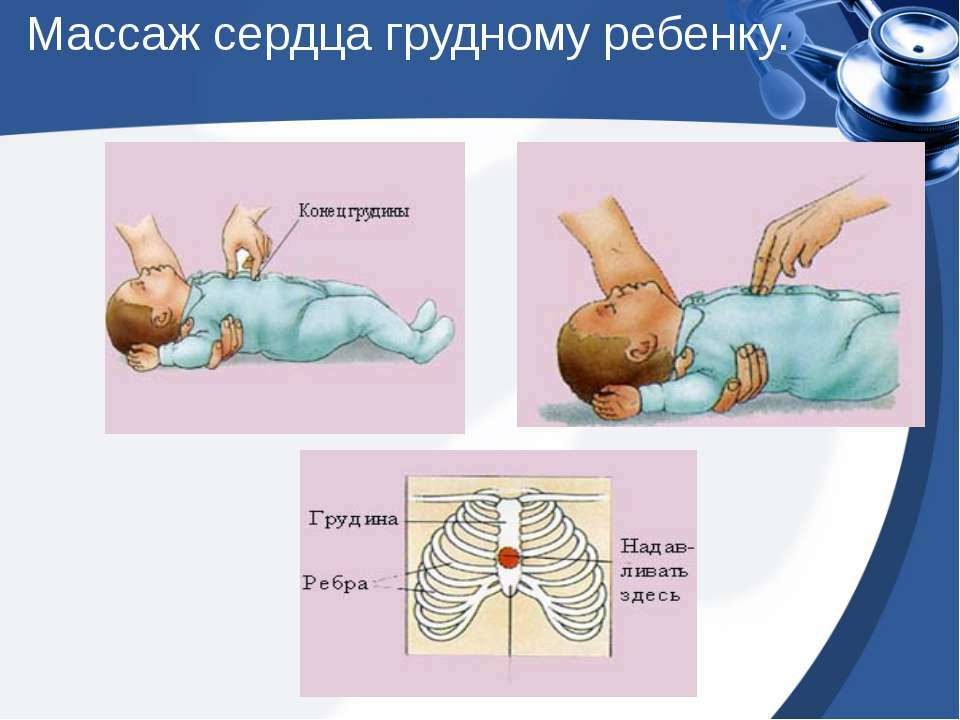
ratio of clicks and respiratory movements in children can be either 30: 2, or if the two rescuers - 15: 2.In neonates, the ratio is 3 clicks per breath.
We recommend you to watch a video review in which Dr. Komarovsky talks about the features of cardiopulmonary resuscitation of children:
Bozbey Gennady A., ambulance doctor

